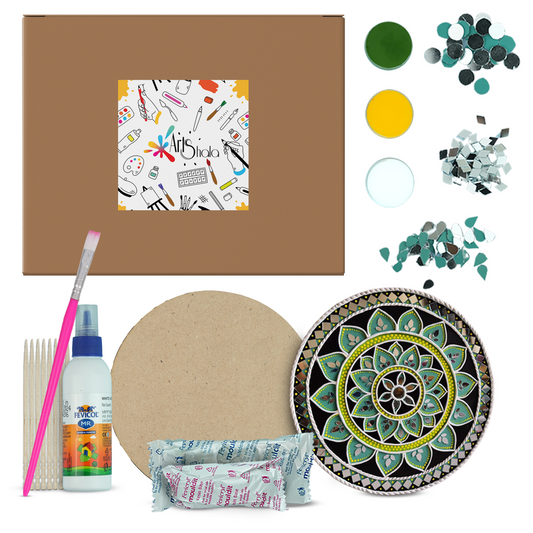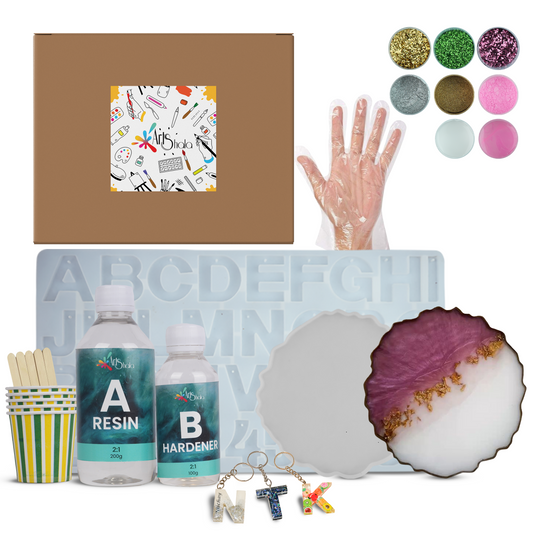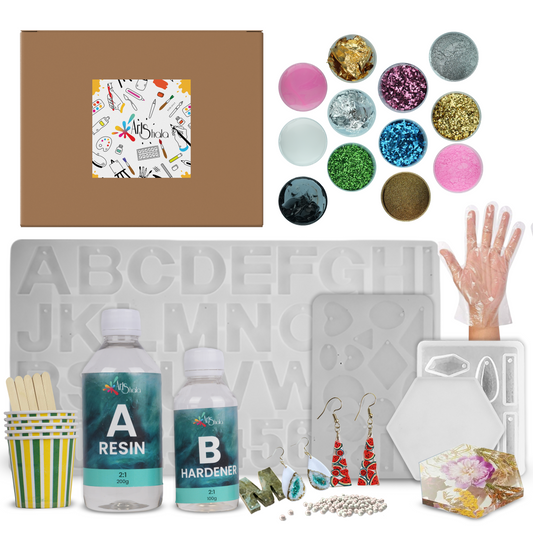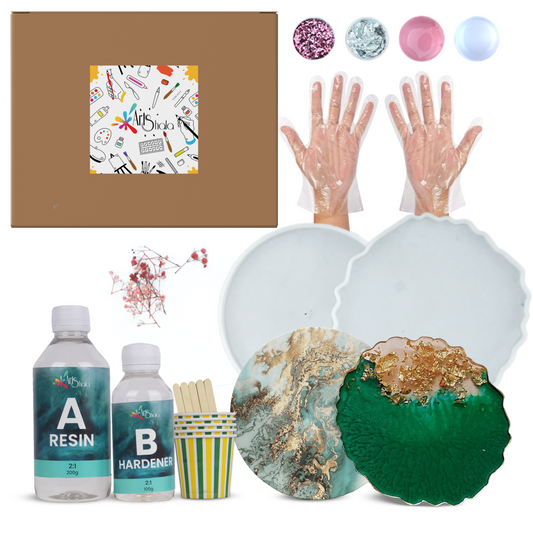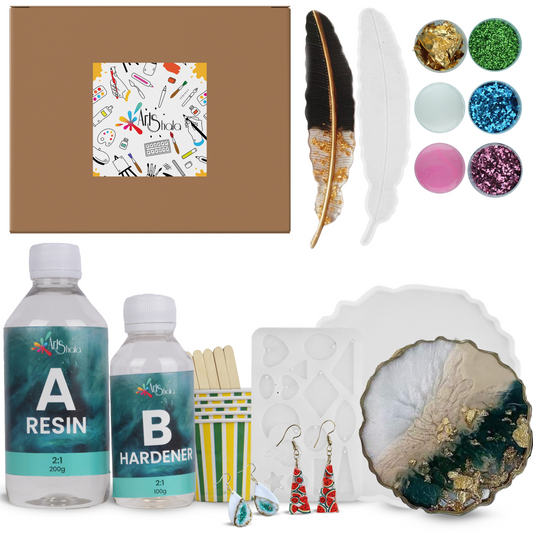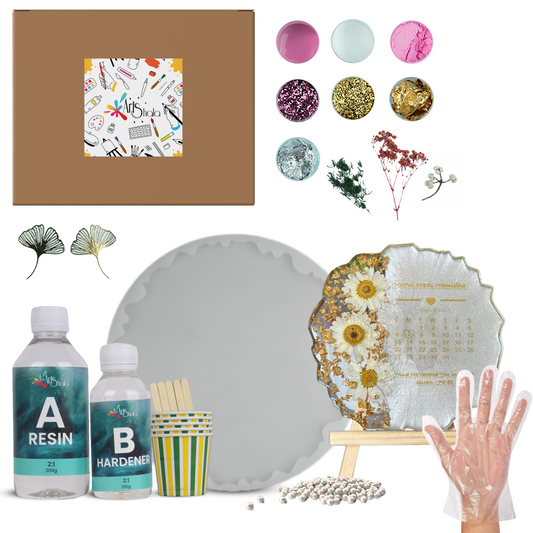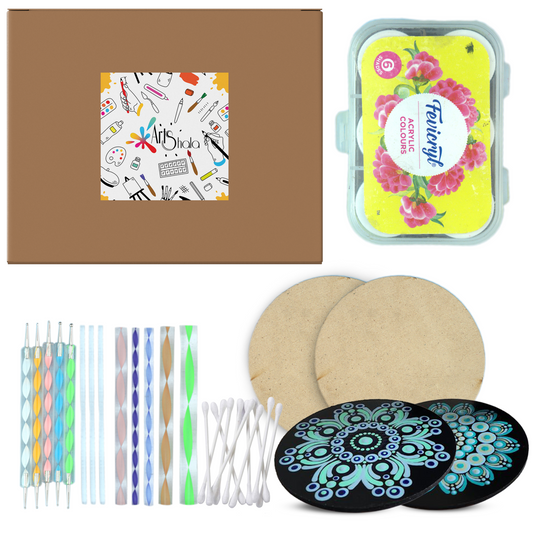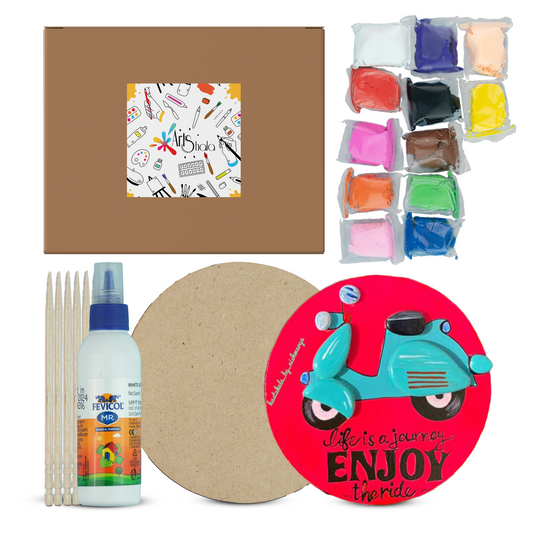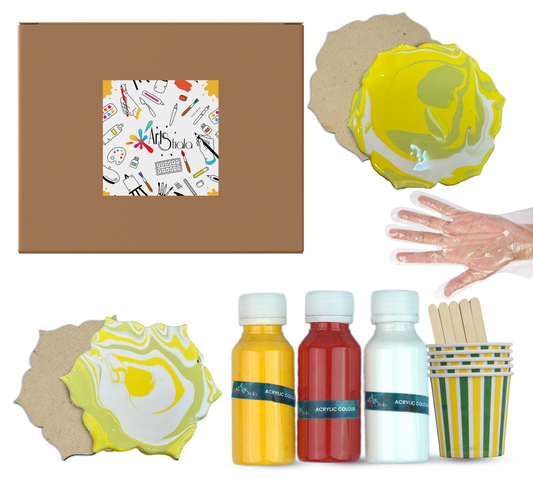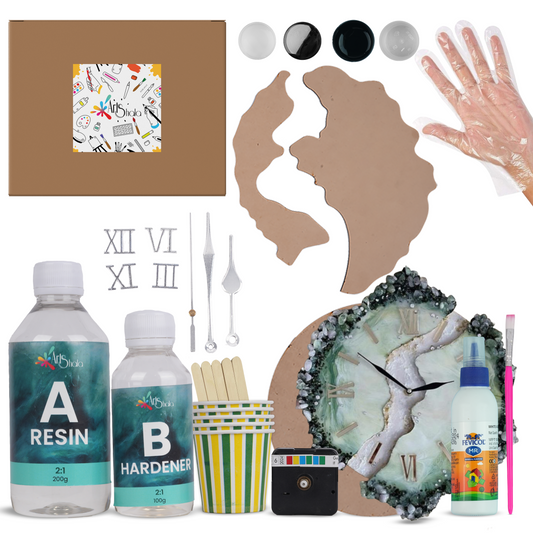DIY Silicone Moulds for Resin: Step-by-Step Tutorial (A Guide)
Have you ever found the perfect shape for a resin project but couldn't find a mould to match? What if you could make your own? Creating your own silicone moulds for resin is a fantastic and rewarding skill that opens up endless possibilities for your crafting. It allows you to replicate your favourite objects or bring your original designs to life.
This blog will walk you through the entire process in a clear and easy manner. We will cover how to make both simple one-piece and more complex two-piece DIY silicone moulds. By the end, you'll have the knowledge to create custom moulds perfectly suited to your unique resin art projects.
Step-by-Step Guide to Create One-Piece DIY Silicone Moulds
This design is ideal for objects that are relatively flat on one side and have no deep undercuts.
Create the Product Master
Your journey begins with the product master. This is simply the original object you want to duplicate. It can be almost anything: a small trinket you love, a shape you sculpted from polymer clay that you've baked, a piece of carved soapstone, or even a 3D printed model you designed yourself.
Construct the Mould Housing
Next, you need to build a wall around your product master. This container is called the mould housing, and its job is to hold the liquid silicone in place until it cures. You can build this box from many different materials. The box should be large enough to have at least a one-inch gap between your master and every wall of the box.
Apply Mould Release
Before you pour any silicone, you must protect your product master. Although silicone is designed to be non-stick, applying a release agent is a crucial step to ensure a perfect result. It ensures your master will pop out easily without damaging your new silicone moulds for resin or the original object.
Pour the Mixed Silicone Rubber
Now for the main event: pouring the silicone. You will be using a two-part silicone rubber compound, often labelled as mould-making silicone. Read the manufacturer's instructions carefully. You need to mix equal parts of the base and the catalyst together. Mix them slowly and thoroughly for several minutes to ensure the colour is completely uniform. Once mixed, you have a limited amount of time before the silicone begins to set.
Cure the Silicone
After pouring, patience is required. The curing process is simply allowing the silicone to sit and transform from a liquid into a flexible rubber. Do not disturb it or try to move the mould housing. The curing time may vary significantly depending on the type of silicone used, as well as the room's temperature and humidity. It may take a few hours or require overnight processing.
De-Mould the Silicone
Once fully cured, the real magic happens. Carefully disassemble or break away your mould housing. If you used Lego or a cardboard box, you can usually take it apart without much trouble. You will now have a solid block of silicone with your object embedded inside. Gently flex the silicone block and begin to peel it back from the edges of your master.
Cast with End-Use Material
Your new custom mould is ready for action. Ensure it is clean and free of any dust. Now, you can use it just like any other mould. Mix your epoxy resin according to the instructions, and if desired, add colourants or glitter. Then, carefully pour it into the cavity of your handmade mould. Let the silicone moulds for resin cure for the full recommended time.
Step-by-Step Guide to Create Two-Piece DIY Silicone Moulds
Making a two-part mould requires a few more steps but follows the same basic principles as the one-piece process.
Create the Product Master and Mould Housing
For a two-piece mould, your object can be any shape. You also need to construct a sturdy mould housing, just as before. The box needs to be tall enough to hold your object and have enough silicone to form two thick halves of the mould.
Use Clay to Form One Half of the Mould
This is the key step that differentiates the two-piece process. You will use non-sulfur-based modelling clay to build a bed for your master. Press your object into the clay until exactly half of it is submerged and level with the clay's surface. The clay line dividing the object is called the parting line.
Pour Silicone into the Housing
With the object half-embedded in clay inside the housing, you are ready to pour the first half of your silicone mould. Mix your silicone rubber as before and pour it over the object and the clay. Fill the housing until the silicone completely covers everything, ensuring it reaches a good thickness above the highest point of the exposed object.
Remove the First Mould from Housing
Allow the silicone to cure completely. Once it is solid and flexible, you can carefully remove the entire silicone block from the housing. The next task is to remove all of the clay you used to form the first half. Peel away the bulk of the clay and then use tools like a toothpick or a soft brush to gently clean every last bit of clay from the silicone and the surface of your master object.
Insert the First Mould & Masters Back into the Housing
Take the first half of your mould, with the master object still sitting snugly inside its cavity, and place it back into the cleaned mould housing. The silicone itself now acts as the bottom of your container. The other half of your object should now be exposed and facing upward, ready for the second pour.
Apply Release Agent & Pour Silicone for the Second Half
You must also put a very light coat on the exposed half of your master object. This prevents the second pour of silicone from bonding to the first pour. Without this step, you would end up with a solid block instead of two separate halves. Once the release agent is applied, mix a new batch of silicone and pour it over everything to form the second half of the mould.
Cure and Remove the Second Mould
Allow the second pour of silicone to cure fully. Once it is done, you can disassemble everything. Remove the entire block from the housing. You should now be able to carefully pry the two halves of the silicone mould apart. Inside, you will find your original master object. You now have a complete two-piece mould that opens like a clamshell.
Conclusion
Creating your own silicone moulds for resin is an empowering skill that unlocks true creative freedom. By following this guide, you can now perfectly replicate cherished objects or original designs, ensuring your resin projects are as unique as your imagination.
To truly master these techniques and bring your most ambitious ideas to life with confidence, consider joining us at Arts Shala. Our instructors will provide hands-on guidance and advanced tips to help you refine your skills. Contact Us Today!


